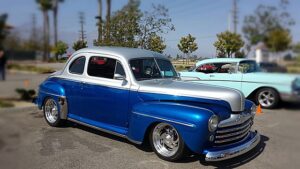Introduction
Rebuilding a motorcycle carburetor is an essential skill for any motorcycle enthusiast or mechanic. A carburetor plays a crucial role in mixing air and fuel to create the perfect combustion ratio for an engine. Over time, carburetors can become clogged or worn, leading to poor performance and fuel efficiency. In this article, we will explore the step-by-step process of rebuilding a motorcycle carburetor, ensuring that your bike runs smoothly and efficiently.
Gather the Necessary Tools and Materials
Before diving into the rebuilding process, it’s important to gather all the necessary tools and materials. Here are some of the items you will need:
Tools: Screwdrivers, wrenches, pliers, carburetor cleaner, compressed air, carburetor rebuild kit, work gloves, safety goggles.
Materials: Gaskets, O-rings, jets, needles, float valve, float bowl gasket, carburetor cleaner.
Remove the Carburetor from the Motorcycle
To begin the rebuilding process, you will need to remove the carburetor from the motorcycle. This typically involves disconnecting the fuel line, throttle cables, and any other attachments. Consult your motorcycle’s service manual for specific instructions on carburetor removal.
Disassemble the Carburetor
Once the carburetor is removed, carefully disassemble it, taking note of the order and orientation of each component. Lay out the parts in a clean and organized manner to avoid confusion during reassembly. It’s a good idea to take pictures or make a diagram to help you remember the correct placement of parts.
Clean the Carburetor Components
Cleaning is a crucial step in the carburetor rebuilding process. Use a carburetor cleaner and a brush to remove any dirt, grime, or varnish buildup from the various components. Pay close attention to the jets, float bowl, and passages, as these are common areas for clogs. Compressed air can be used to blow out any remaining debris.
Inspect and Replace Worn Parts
While cleaning the carburetor, thoroughly inspect each component for signs of wear or damage. Pay special attention to the gaskets, O-rings, float valve, and needles. If any parts are worn or damaged, it is crucial to replace them with new ones from a carburetor rebuild kit. This ensures optimal performance and prevents future issues.
Reassemble the Carburetor
Once all the components are clean and any worn parts have been replaced, it’s time to reassemble the carburetor. Follow the reverse order of disassembly, referring to your pictures or diagram if needed. Take care to properly align gaskets and O-rings, ensuring a tight seal.
Reinstall the Carburetor on the Motorcycle
With the carburetor reassembled, it’s time to reinstall it on the motorcycle. Follow the reverse steps of removal, making sure to reconnect the fuel line, throttle cables, and any other attachments securely. Double-check all connections to ensure everything is properly in place.
Tune and Adjust the Carburetor
After reinstalling the carburetor, it’s important to tune and adjust it for optimal performance. This involves adjusting the idle speed, air-fuel mixture, and throttle response. Consult your motorcycle’s service manual for specific tuning instructions, as the process can vary depending on the make and model.
Conclusion
Rebuilding a motorcycle carburetor is a task that requires attention to detail and proper technique. By following the step-by-step process outlined in this article, you can ensure that your carburetor is clean, properly assembled, and adjusted for optimal performance. Regular carburetor maintenance and rebuilding will keep your motorcycle running smoothly and efficiently.
References
– www.motorcycle.com
– www.revzilla.com
– www.cycleworld.com











